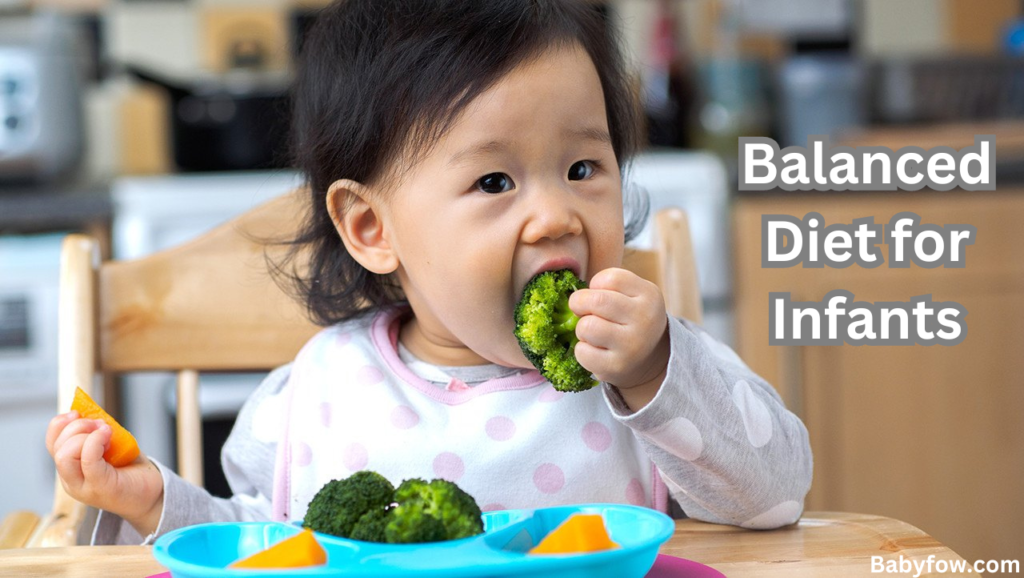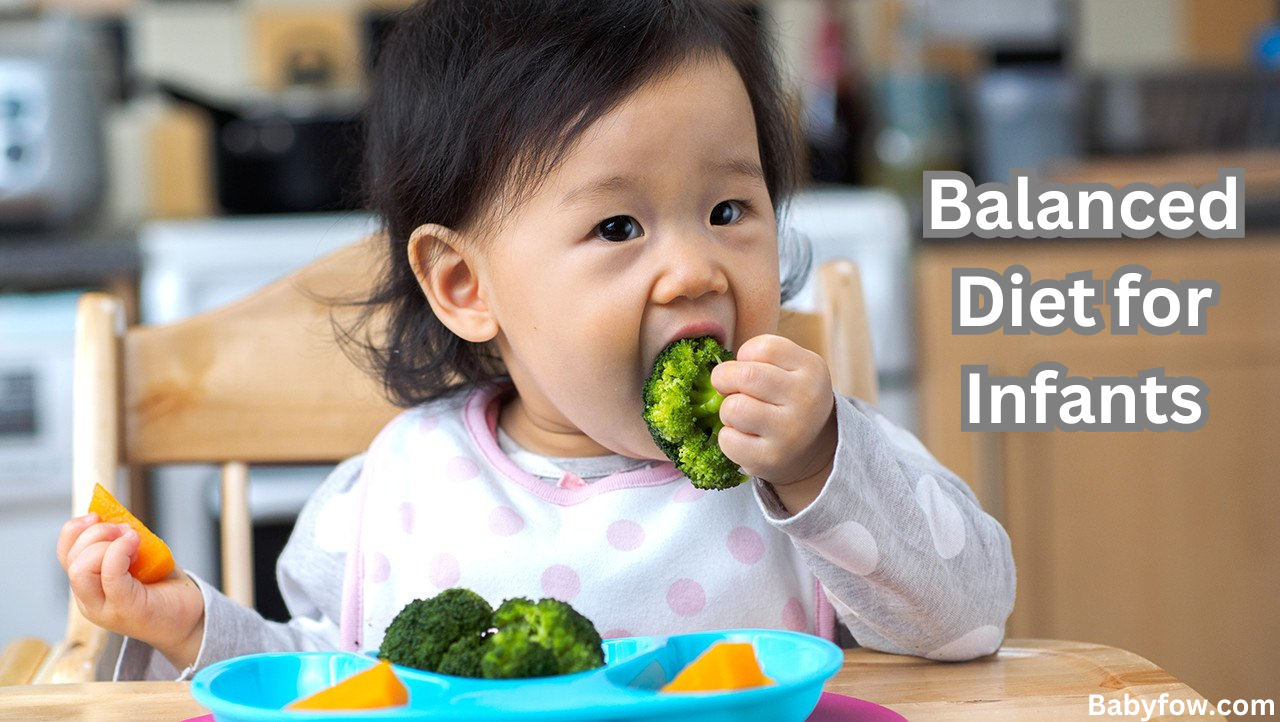Balanced Diet for Infants
Ensuring your infant gets a balanced diet is crucial for their growth and development. A balanced diet provides the necessary nutrients for their tiny bodies to thrive. In this article, we will explore what constitutes a balanced diet for infants, the importance of each nutrient, and practical tips for parents.
Why a Balanced Diet is Essential
Infants grow rapidly in their first year of life. Proper nutrition during this period lays the foundation for healthy growth and development. A balanced diet helps:
- Support brain development
- Build strong bones and muscles
- Boost the immune system
- Provide energy for daily activities
Key Nutrients for Infants
1. Protein
Protein is vital for growth and repair. It helps build muscles, organs, and tissues. Good sources of protein for infants include:
- Breast milk or formula: The primary source of protein in the first six months.
- Pureed meats: Introduced around six months.
- Legumes and beans: Cooked and mashed for older infants.
2. Carbohydrates
Carbohydrates provide energy for your baby’s daily activities. They are found in:
- Breast milk or formula: The main source for infants under six months.
- Fruits and vegetables: Pureed or mashed.
- Whole grains: Such as oatmeal and rice cereals.
3. Fats
Fats are essential for brain development and energy. Healthy fat sources include:
- Breast milk or formula: Rich in necessary fats.
- Avocado: A great first food for babies.
- Full-fat yogurt: Can be introduced around six months.
4. Vitamins and Minerals
Vitamins and minerals support various bodily functions. Key ones include:
- Iron: Important for blood health. Found in fortified cereals and pureed meats.
- Calcium: For strong bones and teeth. Found in breast milk, formula, and yogurt.
- Vitamin D: Supports calcium absorption. Supplement drops are often recommended.
5. Fiber
Fiber aids digestion and prevents constipation. Sources of fiber include:
- Fruits and vegetables: Pureed or finely chopped.
- Whole grains: Such as oatmeal and barley.

Introducing Solid Foods
Introducing solid foods is a significant milestone. Here’s how to do it right:
When to Start
The American Academy of Pediatrics (AAP) recommends starting solids around six months. Signs your baby is ready include:
- Sitting up with minimal support
- Showing interest in food
- Loss of the tongue-thrust reflex
First Foods
Start with single-ingredient foods. Here are some great options:
- Pureed vegetables: Such as carrots, peas, and sweet potatoes.
- Fruits: Like apples, bananas, and pears.
- Iron-fortified cereals: Rice or oatmeal.
How to Introduce
Introduce one new food at a time and wait three to five days before adding another. This helps identify any allergies.
Tips for introducing solids:
- Use a small spoon: Designed for infants.
- Offer small amounts: About one to two teaspoons to start.
- Be patient: It may take several tries for your baby to accept a new food.
Sample Meal Plan
Here’s a simple meal plan for an 8-month-old:
| Meal | Food |
|---|---|
| Breakfast | Iron-fortified cereal, mashed banana |
| Mid-morning | Breast milk or formula |
| Lunch | Pureed chicken, sweet potato, and peas |
| Snack | Small pieces of soft fruit, water |
| Dinner | Mashed avocado, cooked carrots |
| Bedtime | Breast milk or formula |
Common Challenges and Solutions
1. Food Allergies
Food allergies can be a concern. Common allergens include:
| Allergen | Symptoms | Action |
|---|---|---|
| Cow’s milk | Rash, vomiting, breathing issues | Consult a pediatrician |
| Eggs | Rash, stomach upset | Introduce cautiously |
| Peanuts | Severe allergic reactions | Introduce under supervision |
2. Picky Eaters
Some infants may refuse certain foods. Tips to handle picky eaters:
- Keep offering: It can take multiple exposures for a baby to accept a new food.
- Mix it up: Combine disliked foods with favorites.
- Stay calm: Avoid forcing or pressuring your baby to eat.
3. Constipation
Constipation is common when introducing solids. To prevent it:
- Offer water: Between meals.
- Include high-fiber foods: Like pureed prunes and pears.
- Maintain breastfeeding or formula feeding: As it provides essential hydration.
Breastfeeding and Formula Feeding
Breastfeeding
Breast milk is the gold standard for infant nutrition. It contains:
- Antibodies: To boost the immune system.
- Perfectly balanced nutrients: For growth and development.
Formula Feeding
Formula is a healthy alternative to breast milk. Ensure it is:
- Iron-fortified: To prevent anemia.
- Age-appropriate: Follow the manufacturer’s guidelines.
READ MORE :
what size is 80 in baby clothes
Hydration
Hydration is critical for infants. Here’s how to ensure they are well-hydrated:
Breastfed Babies
Breastfed babies usually get enough fluids from breast milk alone. Offer additional water only after starting solids.
Formula-fed Babies
Formula provides hydration, but small sips of water can be offered once solids are introduced.
Special Considerations for a Balanced Diet for Infants
Transitioning to Solids
The transition to solid foods is a gradual process. Start with simple, easily digestible foods. Gradually increase the variety and complexity of foods as your baby grows.
Portion Sizes
Understanding portion sizes for infants can be challenging. Here are some guidelines:
| Age Group | Portion Size |
|---|---|
| 6-8 months | About 1-2 tablespoons per meal |
| 9-12 months | About 1/4 to 1/2 cup per meal |
Frequency of Meals
As your baby grows, their feeding schedule will change:
| Age Group | Frequency of Meals |
|---|---|
| 6-8 months | Three meals a day |
| 9-12 months | Three meals and two snacks a day |
Foods to Avoid
While introducing new foods, it’s essential to know which foods to avoid. Certain foods can pose risks to infants:
| Food | Reason for Avoidance |
|---|---|
| Honey | Risk of botulism in babies under one year |
| Cow’s milk | Should be avoided as a drink before one year |
| Choking hazards | Whole grapes, nuts, hard candies |
| High-salt foods | Can harm developing kidneys |
| Sugary foods | Can harm developing teeth |
Encouraging Healthy Eating Habits
Lead by Example
Children learn by watching their parents. Eat a variety of healthy foods in front of your baby to set a good example.
Make Mealtime Enjoyable
Creating a positive mealtime environment encourages healthy eating habits. Here are some tips:
- Sit together as a family: Make mealtime a social activity.
- Avoid distractions: Turn off the TV and focus on eating.
- Encourage self-feeding: Allow your baby to explore foods with their hands.
Be Patient and Persistent
Introducing new foods can take time. Be patient and keep offering a variety of foods. It can take multiple attempts before your baby accepts a new food.
Nutritional Guidelines and Resources
Consulting a Pediatrician
Always consult with your pediatrician before making significant changes to your baby’s diet. They can provide personalized advice and ensure your baby is meeting their nutritional needs.
Trusted Resources
Use reliable sources to stay informed about infant nutrition. Some trusted resources include:
- American Academy of Pediatrics (AAP)
- World Health Organization (WHO)
- Centers for Disease Control and Prevention (CDC)
Conclusion
A balanced diet for infants sets the stage for a lifetime of healthy eating habits. Focus on providing a variety of foods rich in essential nutrients. Remember, every baby is unique. Consult with your pediatrician to tailor a diet plan that suits your baby’s needs.
Involve your baby in mealtime. Make it a fun and enjoyable experience. Your efforts will pay off, ensuring your little one grows strong and healthy.









Pingback: 2nd Baby Gift Ideas In 2024 - Babyfow.com